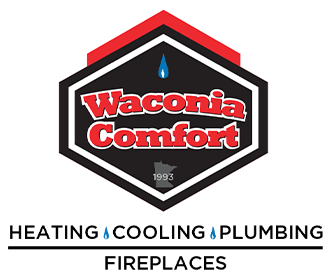How to Prevent Frozen Pipes This Winter
Winter in Waconia brings beautiful snow and crisp air, but it also brings the threat of frozen and burst pipes, which can be an expensive nightmare for homeowners. As temperatures drop below freezing, the water inside the home's plumbing system is vulnerable to freezing, which can cause expansion that can lead to disastrous ruptures.
Preparing the plumbing before the coldest time of year is crucial for protecting it. This post will share some proactive steps that can be taken to help prevent frozen pipes and avoid costly plumbing emergencies this winter.
Insulate the Pipes
 One of the most straightforward ways to safeguard the plumbing against winter's chill is to insulate the pipes. Focus particularly on areas that lack consistent heating or are exposed to the cold, such as piping in attics, crawl spaces, unfinished basements, and garages. These vulnerable locations are where exposed pipes are most likely to drop to freezing temperatures, leading to potential frozen pipes, pipe bursts, and water damage.
One of the most straightforward ways to safeguard the plumbing against winter's chill is to insulate the pipes. Focus particularly on areas that lack consistent heating or are exposed to the cold, such as piping in attics, crawl spaces, unfinished basements, and garages. These vulnerable locations are where exposed pipes are most likely to drop to freezing temperatures, leading to potential frozen pipes, pipe bursts, and water damage.
Adding pipe insulation to these exposed lines reduces the risk of water inside freezing and expanding, which can cause the pipe to burst. This simple preventive measure traps heat within the pipes and acts as a buffer against the external cold, providing a vital layer of protection that can help to avoid costly, inconvenient plumbing emergencies during the coldest months.
Keep the Heat on and Open Cabinets
 Maintaining a consistent indoor temperature is critical when outdoor temperatures plummet. Even if everyone in the household plans to be away for a while, the thermostat should be set to at least 55 degrees. Keeping the home heated above this temperature serves as another line of defense, ensuring that the water in the pipes remains above the freezing point and protecting the plumbing system from freezing and potential ruptures.
Maintaining a consistent indoor temperature is critical when outdoor temperatures plummet. Even if everyone in the household plans to be away for a while, the thermostat should be set to at least 55 degrees. Keeping the home heated above this temperature serves as another line of defense, ensuring that the water in the pipes remains above the freezing point and protecting the plumbing system from freezing and potential ruptures.
To further aid in heat access, open the cabinet doors under sinks, especially those on exterior walls. Pipes running through these enclosures are often more vulnerable to the cold because the cabinet structure can act as an insulating barrier, preventing warm air from reaching them. By leaving these doors open, homeowners allow the heated air from the main living space to reach the pipes, providing an extra layer of warmth and reducing the risk of freezing.
Winterize Outdoor Faucets
Outdoor plumbing, particularly hose bibs and exterior faucets, represents one of the most common and easily preventable sources of winter plumbing issues. To properly winterize these fixtures, the first crucial step is to disconnect all garden hoses and drain them before storing them. Leaving a hose attached, even if the faucet is turned off, can trap water pressure between the hose and the faucet valve. If this trapped water freezes and expands, it can cause significant damage to the faucet itself and potentially rupture the pipe that leads into the home's wall.
After disconnecting and draining the hoses, homeowners should shut off the water supply to the outdoor faucet, which is typically done with a dedicated shut-off valve located in the basement, crawl space, or utility room. Once the supply is off, open the outdoor faucet to allow any residual water in the line between the shut-off valve and the exterior spout to drain completely. Finally, covering the outdoor spigot with an insulating cover acts as a barrier against frigid air, helping prevent the pipe from freezing.
About Waconia Comfort
Waconia Comfort is a heating, air conditioning, fireplace, and plumbing company serving Waconia and the surrounding communities. They provide straightforward pricing, knowledgeable experts, and the latest technology. Call them for plumbing and burst pipe repair services in Waconia, MN.



